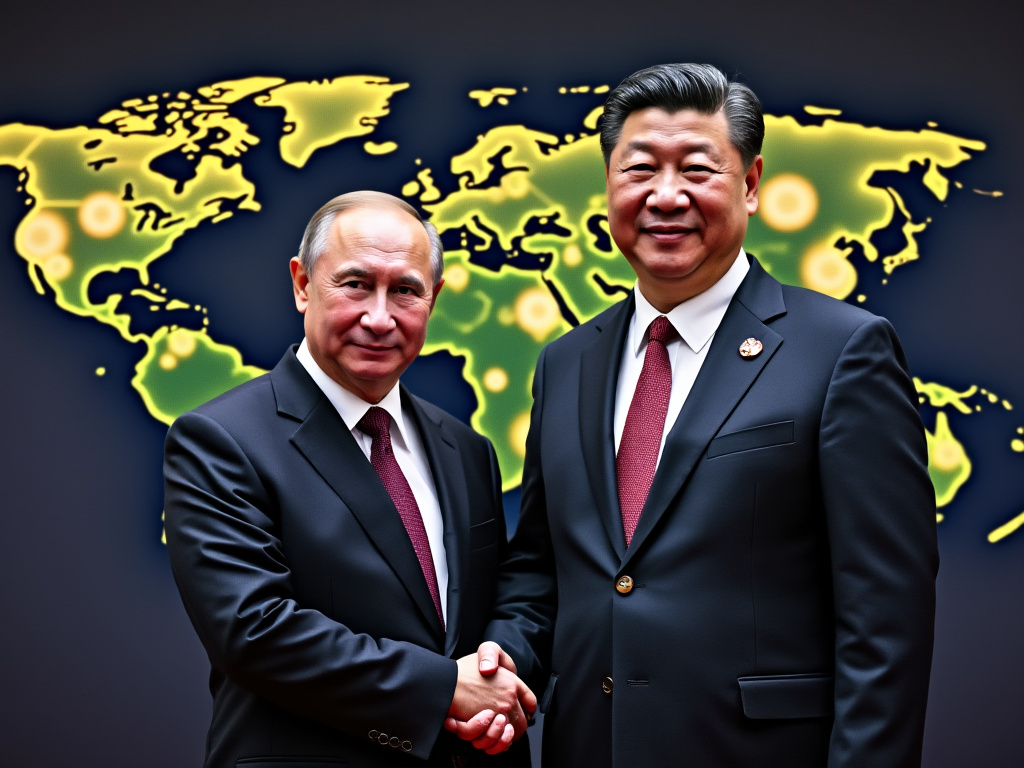Russia is making significant strides in the cryptocurrency sector by planning to launch two new crypto exchanges, one in Moscow and another in St. Petersburg. This initiative aims to bolster foreign economic activity and enhance Russia’s digital economy amidst international sanctions. Furthermore, the Russian government is considering developing a BRICS stablecoin linked to the Chinese Renminbi (RMB), potentially redefining economic cooperation among BRICS nations (Brazil, Russia, India, China, and South Africa). This move signals a new chapter in Russia’s approach to blockchain technology and digital finance.

Russia’s Crypto Exchange Initiative: A Game Changer?
The proposed crypto exchanges, one leveraging the St. Petersburg Currency Exchange (SPCE) infrastructure and the other potentially based on the Moscow Exchange, are set to revolutionize Russia’s digital transaction landscape. The primary focus of these exchanges will be on creating and using stablecoins, a type of cryptocurrency typically pegged to a reserve of assets like a national currency. In this case, Russia is eyeing stablecoins linked to the RMB Yuan and a basket of BRICS currencies.
The rationale behind this initiative is clear: to boost economic cooperation among BRICS countries and reduce reliance on the US dollar. By integrating RMB-linked stablecoins into its blockchain infrastructure, Russia aims to facilitate smoother and more secure digital transactions with its BRICS partners. However, the development and deployment of such stablecoins present significant technological and regulatory challenges.
Technological and Regulatory Challenges in Russia’s Crypto Landscape
Russia’s move to launch its own crypto exchanges and develop stablecoins comes with its set of challenges. Oleg Ogienko, CEO of BitRiver, highlights the technological difficulties of integrating stablecoins into Russia’s blockchain infrastructure. Due to their legal nature, stablecoins resemble traditional cryptocurrencies, which could complicate issues related to convertibility, liquidity, and security. These complexities might impede the seamless adoption of stablecoins in Russia.
On the regulatory front, Russia currently operates under Federal Law No. 259 “On Digital Financial Assets,” which governs the issuance and circulation of digital assets. However, this legislation does not specifically address the creation or regulation of cryptocurrency exchanges. Yaroslav Schitzle from the law firm Rustam Kurmaev and Partners emphasizes the lack of a clear legal framework for operating crypto exchanges under current Russian law. The newly enacted Experimental Legal Regime (EPR) might serve as a foundation, but its application remains untested in the crypto domain.
The rollout of these exchanges will likely be gradual, initially limiting access to a select group of major exporters and importers, often referred to as “blue chips.” This cautious approach indicates the regulator’s intention to control and monitor the experiment’s outcomes before broader public access is granted.
Potential Risks and Global Sanctions: A Double-Edged Sword
While Russia’s crypto exchange initiative aims to strengthen its digital economy, it also poses significant risks, particularly in the context of global sanctions. The transparent nature of blockchain technology could expose transaction data, leading to severe consequences if it falls into the wrong hands. Mikhail Uspensky, an expert on cryptocurrency regulation in the State Duma, warns that transactions conducted on these Russian exchanges could be flagged as suspicious, potentially leading to their blocking.
Furthermore, the use of a Russian exchange could have long-term implications for the holders of digital assets, even if they have no direct connection to Russia. Nikita Vassev, founder of TerraCrypto, suggests that only users with no other alternatives would use such exchanges, given the global preference for established international platforms. This skepticism casts doubt on the domestic platforms’ appeal, especially in a highly competitive global market.
BRICS Stablecoin: A Strategic Move Towards De-dollarization
The proposed BRICS stablecoin represents a strategic move by Russia and its BRICS partners towards de-dollarization. By creating a digital currency backed by a basket of BRICS currencies, these nations aim to reduce their dependency on the US dollar and promote economic cooperation within the group. This initiative aligns with the broader geopolitical goal of establishing a multipolar global financial system.
However, the success of a BRICS stablecoin hinges on overcoming numerous challenges, including technological integration, regulatory compliance, and gaining trust among global users. The move also reflects a growing trend among countries seeking alternative financial systems in response to geopolitical tensions and economic sanctions.
Russia’s Crypto Ambitions and the Future of Digital Finance
Russia’s plan to launch two crypto exchanges and develop a BRICS stablecoin signifies a bold step towards expanding its digital economy and reducing reliance on traditional financial systems. While the initiative presents opportunities for enhancing economic cooperation within BRICS, it also faces significant technological, regulatory, and geopolitical hurdles. The success of this endeavor will depend on how effectively Russia can navigate these challenges and establish a secure, reliable, and globally accepted digital currency framework.
As the cryptocurrency landscape continues to evolve, staying informed about the latest developments is crucial. To learn more about emerging trends in blockchain and digital finance, visit our blog at NFTBOOKS and explore how NFTBOOKS is shaping the future of publishing on the blockchain.







